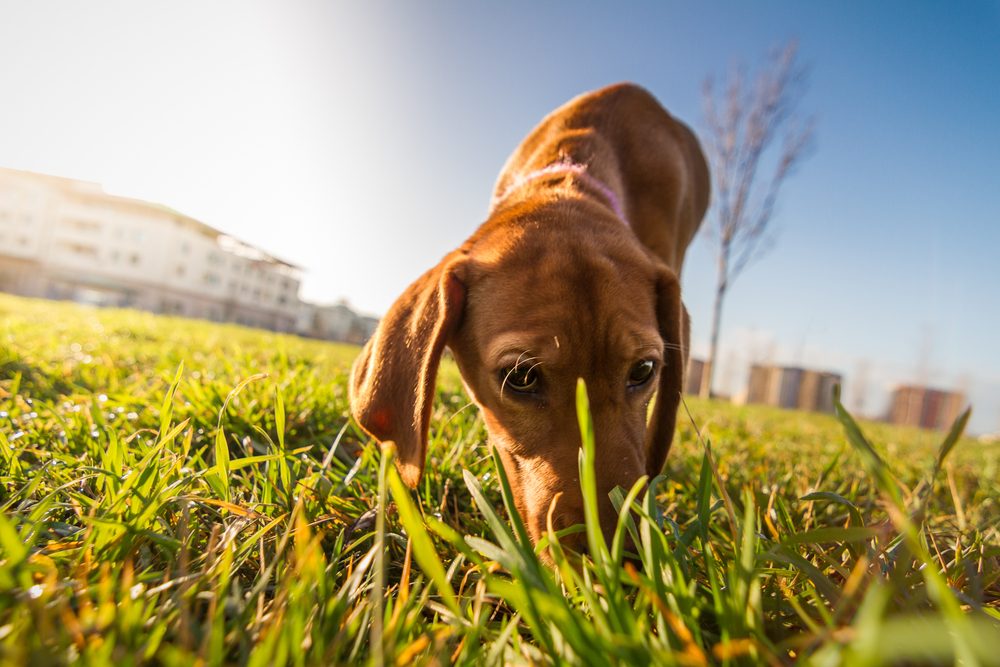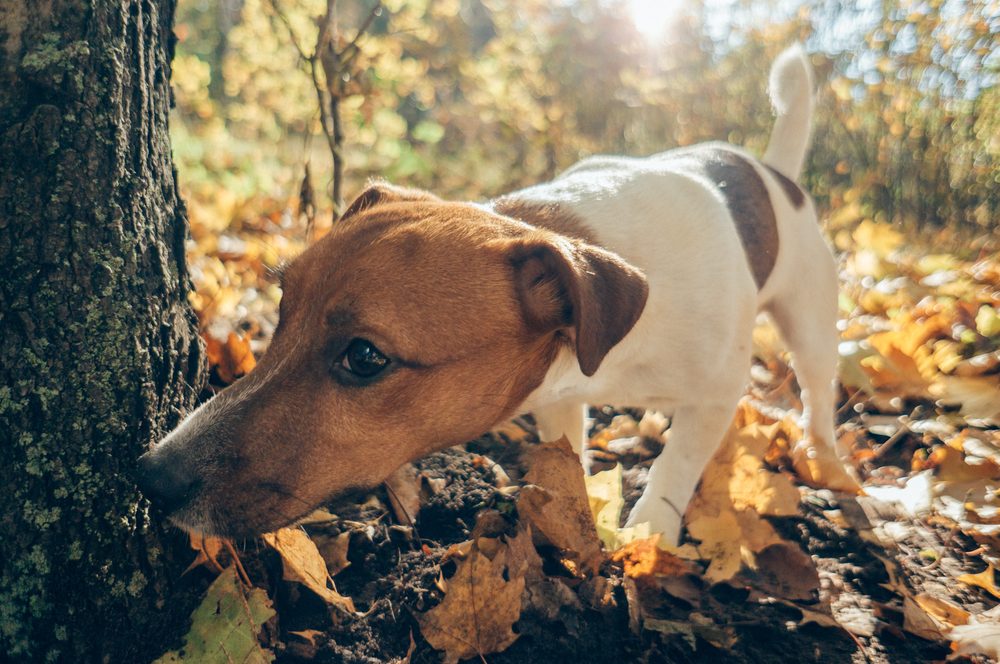Why do dogs sniff everything? If you haven’t already heard, a dog’s sense of smell is 10,000 to 100,000 times more powerful than ours. Just as humans use their eyes to see and understand the world, experts say dogs use their nose to “see” the world. In fact, our dogs’ world revolves around smell so strongly, allowing them to sniff actually lowers anxiety and increases their mental health.
So, while it can be frustrating to walk around the neighborhood with a furry companion who tries to stop every few feet to investigate something new with his nose, experts say you should allow your dog to explore on walks. Here’s more….

Why do dogs sniff everything and why is it important?
When we limit our dog’s sniffing options, their daily welfare and enjoyment of the world suffers, Ali Smith, founder at Rebarkable, tells us. As a result, this affects their socialization, behavior, and training as well as their happiness and well-being.
“Allowing our dogs to sniff actually helps create pathways in their brains,” she says. “It relaxes them and allows them to be a dog. This is why sniffing is massively important for our woofs, and why we should always make time.”
Use the 70/30 rule
But how much time is enough time? After all, most of us have schedules to keep and can’t always wait for Fido to finish every investigation. Colleen Demling-Riler, an in-house dog behaviorist expert for Dogtopia, recommends keeping your pup walking for 70% of the time and giving him the remaining 30% to sniff and explore the environment.
“Sniffing is fine, but within reason,” she says. “Walks have many purposes, but the main one is exercise. If you go on a 30-minute walk but your dog’s nose is so active that you barely make it around the block, you will return home with a pup that has lots of excessive energy. This means your dog will likely demonstrate problematic behaviors such as excessive jumping, counter surfing, barking, and/or chewing.”
And nobody wants a counter surfer. So, to make sure you get in a fair share of sniffing and exercise, identify a few of your dog’s favorite places to sniff, then practice walking between those smelly sites without stopping. Practice the “leave it” command, too, so you can explore new routes using the same 70/30 rule with ease.

Include some safeguards
Of course, always watch what your dog is sniffing. It’s OK to say “no” to a smell that is potentially dangerous or harmful to your dog’s health.
Lung infections such as aspergillosis, cryptococcosis, and blastomycosis are common diseases caused by fungi in the soil and other environments. While they are less common than bacterial or viral infections, they are still quite serious. Call your veterinarian immediately if your dog becomes lethargic or develops a cough, bloody discharge, fever, or loss of appetite, especially after an intense sniffing session.
“Always make sure your dog is up to date with vaccinations, make sure they are not licking or eating things they are sniffing at, and try to prevent them from digging in their environment to help control certain fungal infections,” Dr. Antje Joslin, an in-house veterinarian expert for Dogtopia, says.
Appreciate the superpower
When you stop and think about it, a dog’s sense of smell is pretty amazing. The 300 million olfactory receptors they possess, compared with 6 million in a human, can be used for more than just finding their food bowl at dinnertime.
“We know that a dog’s nose allows them to do some pretty powerful jobs — from medical alert dogs to detection dogs,” Caroline Wilkinson, founder of Barket Place, says. “Dogs have been found to be able to sniff out — and indicate the presence of — dangers or diseases, including drugs, bombs, cancers, and malaria.”
Wilkinson says a number of scientific studies conducted over the past few years have explored the effect of scent and its ability to lower levels of cortisol (the stress hormone) in our dogs. Encouraging our dogs to engage in activities that lower stress, such as sniffing new scents, following trails, or playing nose games, can have a positive impact on their welfare. So, the next time you reach for the leash, ask yourself if you’ve allotted enough time for your dog to do some serious sniffing. It may take a few extra minutes, but considering the health benefits it provides, it’s well worth the effort.


